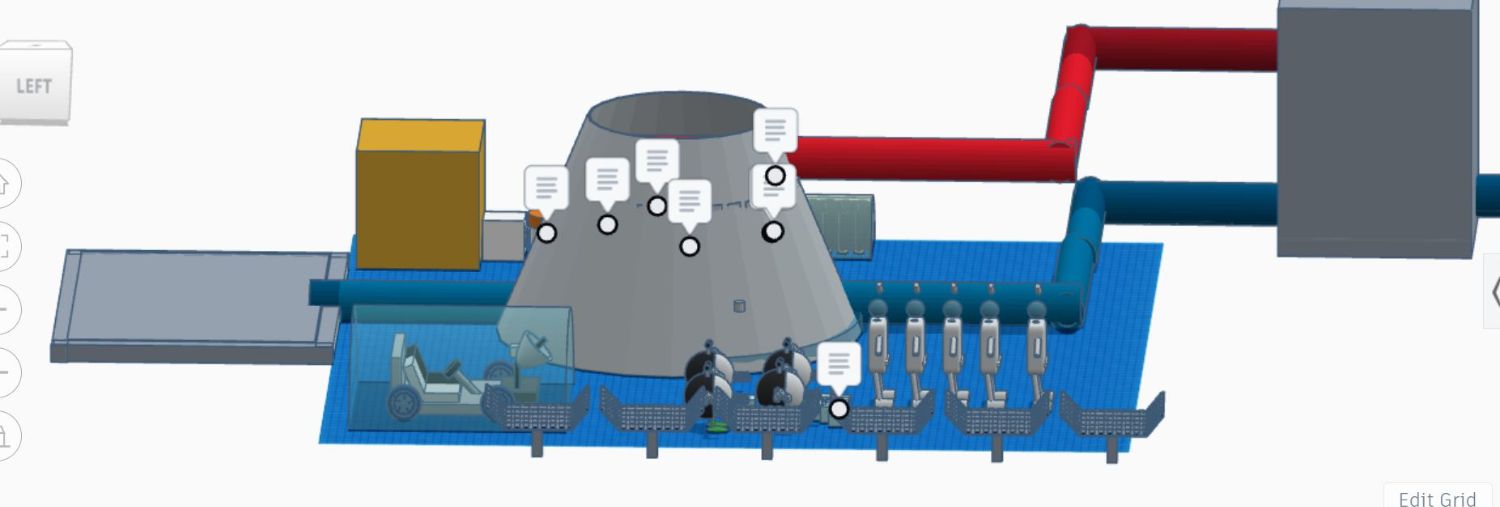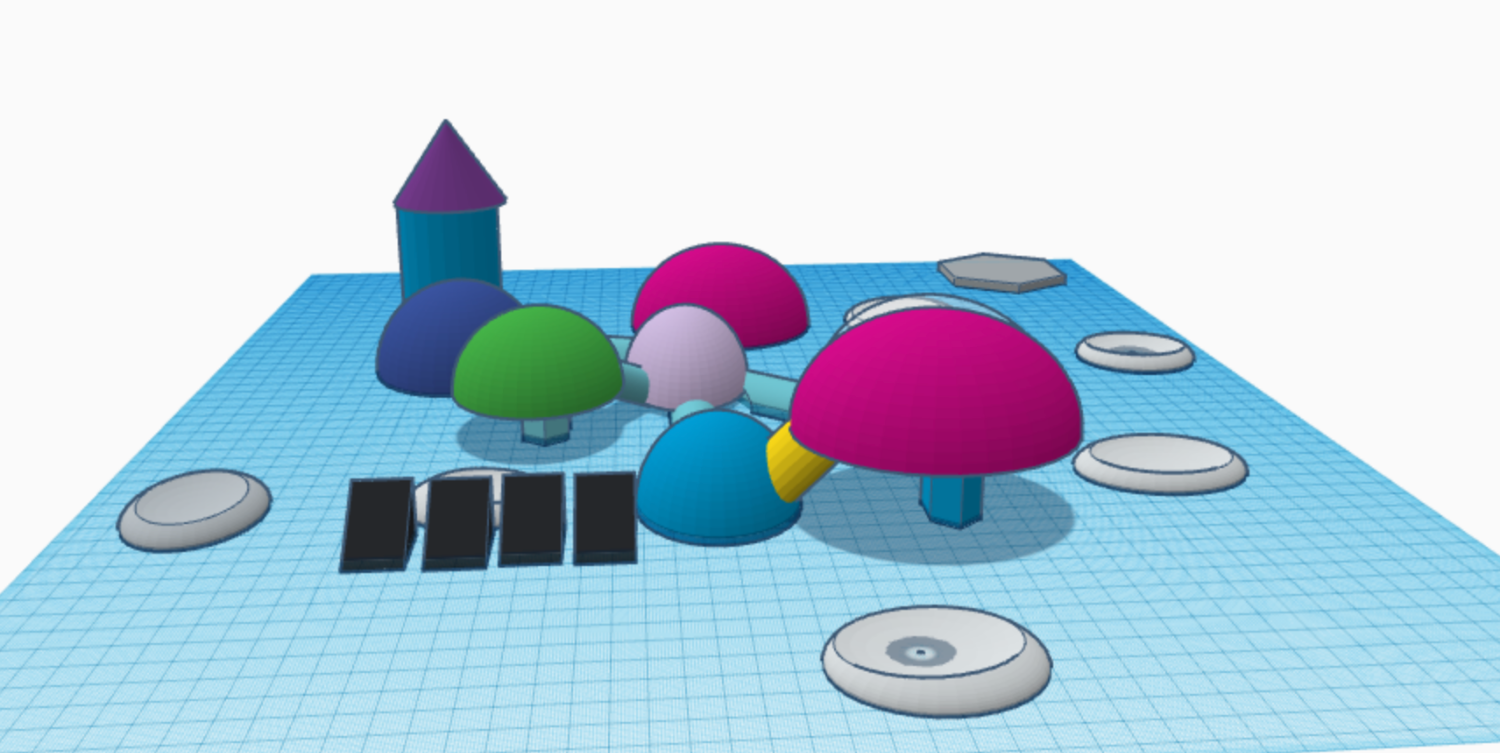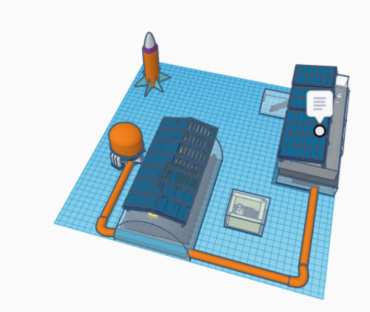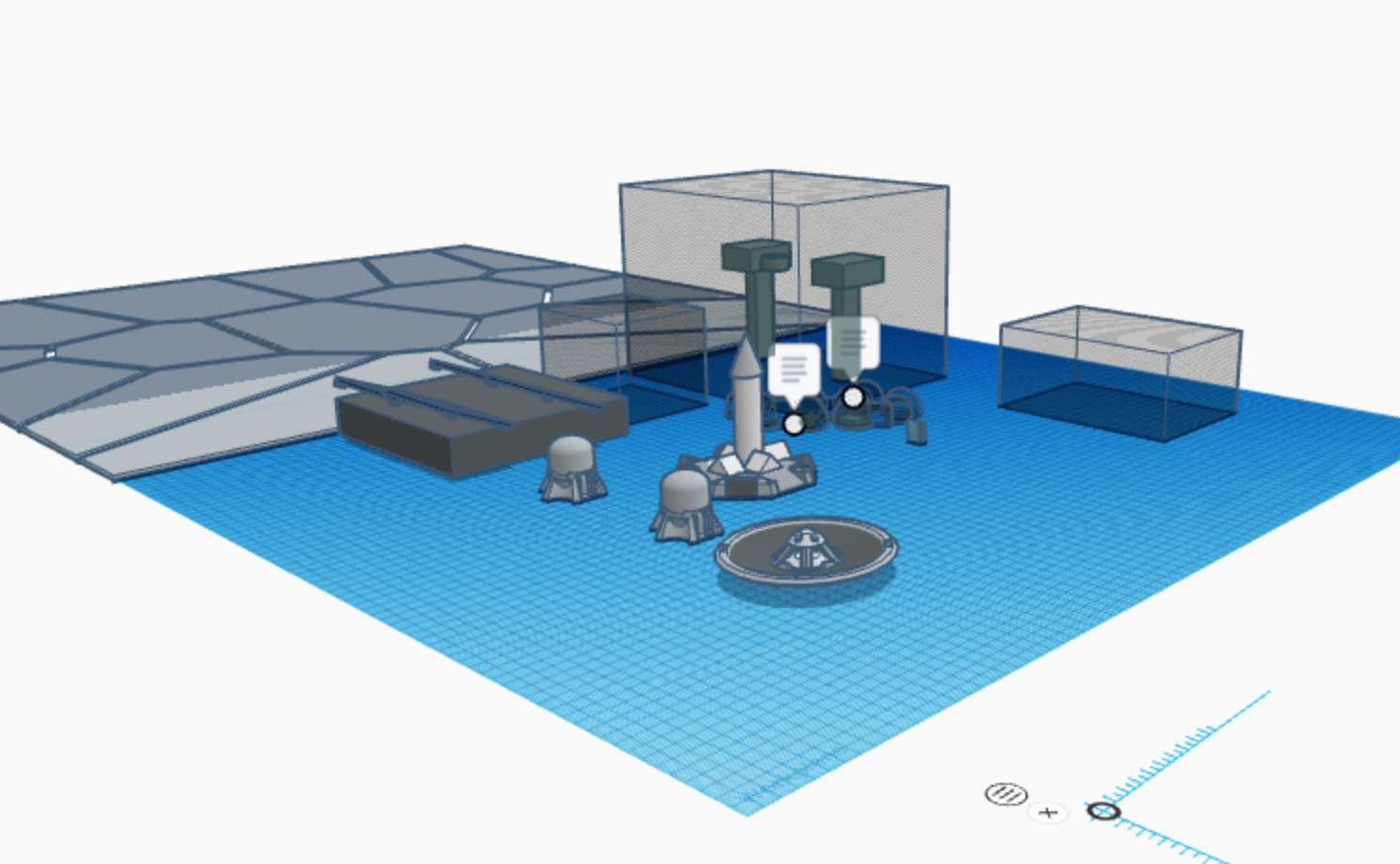Moon Camp Explorers Gallery 2021-2022
In Moon Camp Explorers each team’s mission is to 3D design a complete Moon Camp using Tinkercad. They also have to explain how they will use local resources, protect astronauts from the dangerous of space and describe the living and working facilities.
Team: Opportunity
GEMS Modern Academy Dubai United Arab Emirates 9 4 / 2
External link for 3d
|
Project description
Our Moon Camp, called Moon Camp Opportunity, is the first base to be located on Earth’s only natural satellite, the Moon. Our camp is to be made in phases, where the first 3-5 phases will be spent in the construction of the base. Once the camp is fully constructed, astronauts will be sent to the camp on 6-month rotations, thus making the length of one term/stay being 6 months long. The camp will initially rely on supplies sent from Earth, but once production facilities have been set up, the base will be completely self-reliant. |
||||
|
Where do you want to build your Moon Camp?
Peary crater Why did you choose this location?
We chose this area as the edges of Peary crater are bathed in ‘eternal sunlight,’ thus making it an ideal location for solar panels. Also, Peary crater is located near the lava-flooded ‘Byrd’ crater which provide a renewable source of heat. Peary crater also is near areas which experience permanent darkness, thus leading many to believe that the presence of ice is highly likely, thus giving us a stable source of water. How do you plan to build your Mooncamp? Which materials will you use?
We plan to use stable/strong but also lightweight materials. These include carbon-fibre, graphene, and small traces of titanium will be used to make sure the buildings are rock-solid. For our nuclear facility, we use 1m thick concrete around the core, as well as have water pumps to make sure the water is constantly flowing. All raw building materials will be shipped from Earth, but all construction will take place on the Lunar surface. |
||||
|
Water
|
Food
|
Electricity
|
Air
|
Protection
|
|
Our Moon Camp will rely heavily on water supplied from Earth in initial stages, but once the ice-mining facility is set up, the base will be self-reliant. We plan to use ice taken from the shadows of the ‘peaks of eternal light,’ however, expeditions to the South Pole may be conducted to make the most of the rich ice stores confirmed to have been there. |
Greenhouses which use hydroponics and aeroponics will make up the veggie content of our astronaut’s diet, and stem cell growth looks like a promising contender as we look to ‘grow’ meat. In initial phases, though, we will rely on food vacuum packed from Earth. |
Our camp relies heavily on solar energy from solar panels placed upon the unnamed ‘peaks of eternal light’ bordering Peary. We will also use nuclear energy, powered by radium, to make an extremely efficient electrical nuclear facility. |
Our camp will rely on shipments of gases from Earth containing oxygen, nitrogen, argon, etc. Later, we will collect nitrogen from dying plants in the greenhouses. In some shipments, all the gases will be separate, but then be mixed to form the air which is used |
Astronauts will wear the Advanced Astronauts Protection System (AAPS), which guarantees individual protection. For the base, we rely heavily on the materials from which the building is constructed (see Section 2: Section 2.2). |
|
Describe a day on the Moon for one of your Moon Camp astronauts
Our astronauts will wake up, then brush their teeth, eat breakfast, then set off to work on scientific experiments, communicate with Earth, or explore in rovers. Then, at 13:00 hours GST, they have their lunch, and then set of to do their afternoon activities. At 16:00 hours, they have a quick snack and then its back to work until 19:45 hours, when they have their dinner, brush their teeth at 20:15 hours, and go to bed at 20:30 hours. |
||||








